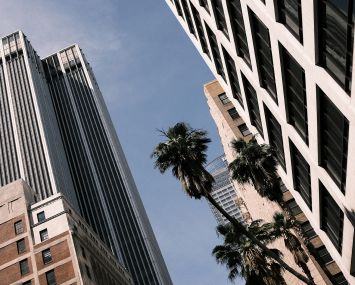One could easily say that one of the main reasons why the investment sales market has performed so well for the past several years is because of the extraordinarily low interest rate environment we’ve been operating in. Low interest rates have been the rocket fuel that has supercharged the market, while the broader economy has been sputtering along in a mediocre fashion, at best.
The Fed has been keeping interest rates low, hoping that the low rates would spur economic activity. They were also hoping that the low interest rates would stimulate the housing market, which would create a wealth effect among American homeowners. The more equity homeowners felt they had in their homes, the wealthier they would feel and the more they would spend. While these two objectives are worthy, a tangential by-product of this low interest rate environment is strength in the commercial real estate sector.
One of the biggest concerns is that these low rates are inflating a commercial real estate asset bubble. History and economics both teach us that long periods of low interest rates create asset bubbles. In fact, many economists point to past Fed Chairman Alan Greenspan keeping rates too low for too long as the main reason for the Great Recession. Low rates simply inflated the housing bubble, which later popped, causing a deflationary condition in the U.S. housing market for the first time ever. Have our rates been too low for too long? Consider this: the Federal Funds rate has been less than 0.25 percent for six years and four months. Further, it has been less than 0.16 percent for over four years.
Those are some low rates.
Consequently, if rates do change, up is the only direction they can go—and most real estate market watchers feel if rates rise, values will decrease. This is not necessarily the case. True, over the long term, interest rates and capitalization rates are highly correlated. In fact, if we look at multi-family cap rates compared with lending rates over the long term, we see that the average deviation is a mere 26 basis points. Therefore, as interest rates rise, cap rates rise, and as cap rates rise, values decrease. Or so goes traditional logic.
However, whether rates rise, or not, is not the most important issue. Even if rates rise, why they rise is critical. If rates rise because there is tangible traction in the economy that is a good thing‑because even if rates rise and cap rates rise, net operating incomes will rise due to healthy economic activity, causing increased net operating incomes, which will produce higher values even with higher cap rates. However, if interest rates rise because of the unprecedented money printed by Washington without real traction in the economy, increased rates will kill the market. So it is the why, not the if, when it comes to interest rates that matters.
So, will interest rates rise this year? No one really knows. Janet Yellen has indicated that the issue is “meeting to meeting” for the Fed. She keeps indicating that rates are going to rise. However, the broader economy is not entirely supportive of this position and could help to keep rates low for the foreseeable future.
Gross domestic product has been growing modestly at best. Since the recovery, average GDP growth has been just 2.24 percent annually. At less than 2 percent growth, we feel like we are in a recession even if this does not meet the technical definition. Job creation has been improving (February’s number was higher than anticipated), but since the recovery began, job growth has only averaged 183,000 jobs per month. We lost 8.4 million jobs during the recession and have regained about 11.4 million jobs since. However, even with 3 million more jobs than we had in 2007, if we consider population growth and our current participation rate, we are about 7.5 million jobs behind where we need to be to have that same “feel good” feeling we had as a nation in 2007. In 1999, average median income was about $57,000 per year (adjusted for inflation). Today, AMI is less than $52,000. This lack of real income growth is also a drag on the economy.
The Fed is well aware of these metrics, which will likely impact the speed with which interest rates are increased. If rates stay relatively low, there is no reason why property values should not stay high, and our investment sale market should continue to hum along.


